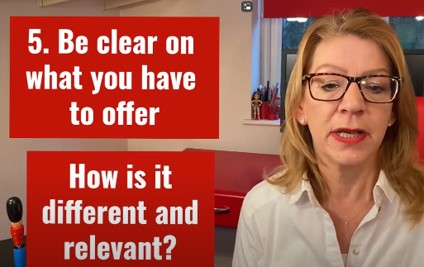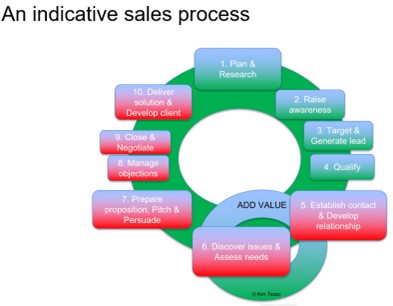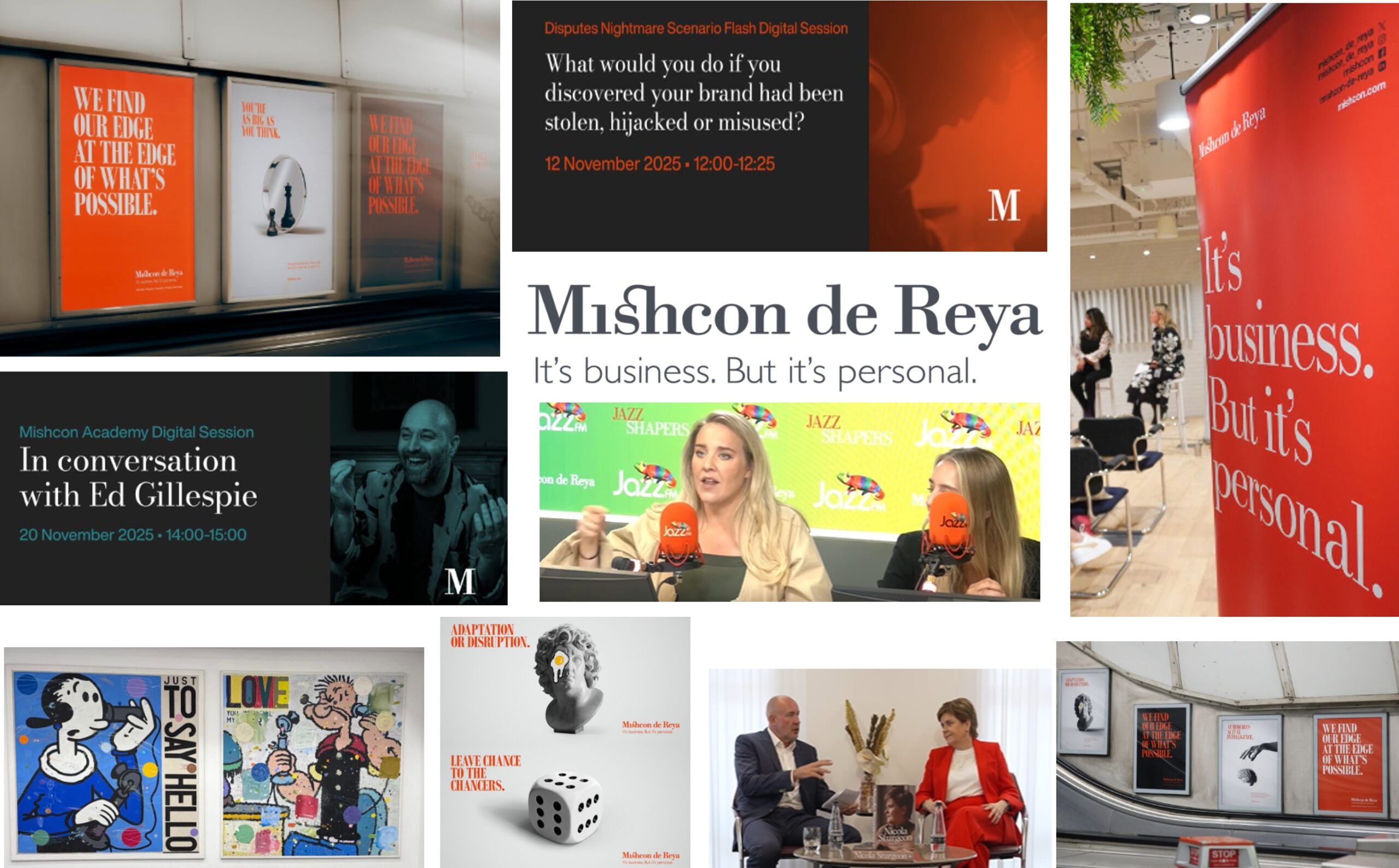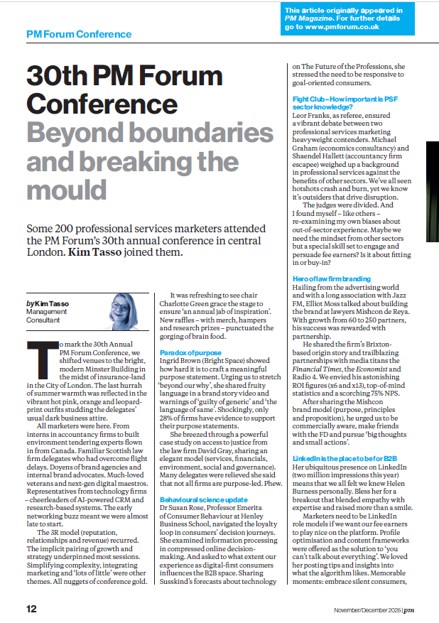
This short (10 minute) video takes a look at pitching and shows the client reaction to submissions to a fun make-belief pitch. Five tips are explored: process, research and empathy, relationship, document and presentation and differentiation. Please enjoy perfect pitches – five key points.
Video script
Hi, I’m Kim Tasso – and today I’m going to share some top tips on how to pitch effectively.
Now pitching is a big topic – drawing on a wide range of selling and interpersonal skills. In fact, I’ve recently finished a whole day’s training on pitching and we still didn’t cover everything.
When I first encountered pitching – it was in a law firm decades ago where lawyers called pitches “Beauty parades”. The idea being that you line up looking your best and hope that you will be picked.
While we concentrate on the rational side of pitching – compiling all the facts and information – we must not forget that ultimately decisions are made on emotional factors. In most pitches – people buy people – they are looking at your culture and personalities and deciding whether there is a good “fit”.
To illustrate my five points I will show you what it feels like to be a client considering five competing offerings. So, the brief in this fictitious example is that the client wants a soldier – who must be obedient, in uniform and an effective fighter…so we can see what we receive as pitches – to see things from the client perspective.
So I have to pick just a few things today to provide some help….
1. Have a pitch process
Too often, people will leap right in and excitedly start preparing information for a pitch as soon as it is received.
But you need to spend time deciding whether you really want to pitch…most people will have a list of “go/no go” criteria. Otherwise you can invest a huge amount of time trying to win work that either isn’t very profitable or where your chances of winning are too slim.
So you need a process that shows what you do at each stage of the pitch process. Research, meetings, team co-ordination, writing, presenting and so on.
You’ll also need a timetable so that you can do everything that is necessary within the client’s time scales and NOT miss the deadline.
(And here’s the first pitch submission – ticks the boxes on soldier, obedient, uniform and a fighter)
2. Do your research and develop empathy
The client has probably sent you a brief. Or a Request For Proposal (RFP) or an Invitation to Tender (ITT). But you will need to do a lot of research for your pitch.
You will naturally look at your internal systems to consider any past relationships or similar clients or similar engagements – and maybe even your experience in the sector.
But you also need to do a lot of external research about the clients’ sector, issues, organisation, departments and people.
Larger firms have access to dedicated analysts or researchers – or to online marketing intelligence services which they pay for – beyond information on Companies House.
Smaller firms will have to do the leg work themselves.
But social media is an excellent source of information – particularly to get the inside track on the sector, businesses, people and issues they face.
A key error in pitching is to make it all about you. You need to do research and meet with the client so that you start understanding them better – to develop empathy with them and to see things from their point of view. Then make the pitch all about the client and their needs.
This way you may find out about additional needs or the underlying reasons for their purchase request. There’s more information about research in the pitch process.
(And here’s my second pitch submission – ticks the boxes on soldier, obedient, uniform and a fighter)
3. Start building the relationship at the earliest opportunity
Don’t forget that selling starts at the very first contact – even an email or telephone call to confirm receipt of the invitation to pitch. Ideally, your marketing and sales activities mean that you will have an established relationship and will know that the pitch or tender is coming in advance. Maybe you’ve even helped shape the invitation to tender.
A key way to develop empathy and the relationship is to actually meet with the client at the earliest opportunity.
At the scoping meeting you can elicit additional information about their hopes and fears and preferences. You can also start to demonstrate your expertise with smart questions and insight.
(And here’s the third pitch submission – ticks the boxes on soldier, obedient, uniform and a fighter. If I were the client I’d be getting a bit bored now – aren’t you? As all three pitches are the same the client is tempted to pick the one with the cheapest price as there’s no difference).
4. Craft your document and presentation with care
Once you have done your research and clarified your proposition and key messages and considered what you will do and how and at what price, you can get to work on preparing the pitch document. And – once you have feedback from the client on that document – you can prepare the presentation.
There are two stages in your preparation for both the document and the presentation – getting the content right and also how the content is delivered.
Many people make the mistake of basing their presentation entirely on what they said in the document. But that makes for a long and repetitive presentation. So select a few themes on which to in the presentation – ideally after getting some feedback from the client on the document. They may also have new questions and requirements having read the documents from the competition as well. You may need to adapt your approach in the presentation as a result.
And don’t forget that the client has to sit through a number of presentations – and whether you are presenting first, in the middle or at the end should alter your strategy and approach. The primacy and recency effects will come into play. And the client will become more familiar with the issues as they see more presentations.
And with presentations – keep it brief and aim to get to the interactive elements and questions as quickly as possible.
(And here’s the fourth pitch submission. A pirate! Well, he has a uniform of sorts – not sure he was a soldier but he obviously fights. I’m a bit worried though as the client’s soldier and uniform requirement was about professional training – so maybe it would be risky to go with this one? Might it reflect poorly on the client’s brand and reputation? The pitch document says they don’t know about his obedience but he is a great leader. So the client is now wondering whether this is an important attribute they want. Barbarossa means “red beard” in Italian and he has interesting origins, has travelled the world and speaks many languages. So the client is wondering whether they should have thought about diversity. The client is now also wondering whether they want the soldier to be able to have maritime skills – so that’s interesting. The client is now thinking about other criteria they might need. This is throwing some shade on the first three submissions too.
5. Be clear about what you have to offer that is different and special
Often we talk about sales strategy and USPs – Unique Selling Propositions or value propositions. There is introductory material on value propositions and this book on value propositions is more advanced.
So you need to think about what the client wants and needs – and think beyond the brief and be creative and bold.
Then you need to think about your strengths and weaknesses in meeting the client’s needs – and you need to think about how you stack up against the competition. Are you the incumbent? Are you a specialist compared to other generalists? Are you smaller or larger than the other firms pitching? How important is price and value? Innovation and risk?
And if you can’t articulate succinctly why the client should choose you then it will be hard for the client to know. So communicate “Why choose us?” really well.
(And here is the fifth pitch submission – ticks all the boxes but there’s extra – a solider but also a specialist – SAS Special Air Services. Travelling by air rather than the sea like the pirate. Obedience – for sure as he takes orders – but he also uses his initiative in difficult situations. There are modern communications devices and the weapons are better – there’s more technology here. And it seems that they have understood that it is not just about the features the client requested – solider, obedience, uniform, fighting – but that the underlying needs were for protection and the feeling of safety. This is sufficiently differentiated in a way that adds value to the client.
Which would you choose?
So. Five key points on pitching and tendering. Good luck with your pitching!
Thanks for watching and listening.
Related blogs on pitching
Pitching and tendering – Manage objections – Kim Tasso August 2024
Pitches, tenders and proposals – Efficiency (systems) May 2024
Pitching, differentiation and competitor analysis June 2023
Pitch points from a pitching and tendering training workshop April 2023
Pitching insights – Qualification, Branding and Following up October 2022
Five Spice Girl lessons from a pitching workshop (May 2022)
Pitching and tendering – Focus, differentiation and less is more (April 2022)
Insights on pitching – Online, virtual, productivity, confidence December 2021
Seven pitching themes – specialisation, engagement, research, content May 2021
Pitch Points – Five thoughts from a pitching and tendering workshop | Kim Tasso January 2021
marketing case study – Transformational change in Savills’ bid processes | Kim Tasso November 2020
Pitching and Tenders – Nine top tips and client feedback (June 2019) | Kim Tasso June 2019
Malcolm McDonald on value propositions – How to develop them | Kim Tasso May 2019
selling legal services with storytelling | Kim Tasso September 2017
Winning pitch presentations – tips for competitive tendering | Kim Tasso May 2017
strategic tendering | Kim Tasso Book review May 2017
persuasive writing – for business development | Kim Tasso February 2017
Selling – research in the pitch process | Kim Tasso October 2016
perfect pitches and tenders in professional services | Kim Tasso October 2015
Pitch development system | Kim Tasso August 2015
Marketing Technology – To automate or not to automate legal pitches? | Kim Tasso July 2014
Book review – “Creating winning bids” (architecture and construction) by Basil Sawczuk – Kim Tasso | Kim Tasso April 2013
Helping fee-earners prepare the perfect pitch or tender | Kim Tasso February 2013
Perfect Pitches for Property People – Kim Tasso | Kim Tasso January 2013
Understanding General Counsel – Four recent reports | Kim Tasso January 2013
Helping fee-earners prepare the perfect pitch – Kim Tasso | Kim Tasso November 2012
Winning tenders with procurement involvement | Kim Tasso May 2011
Selling – The importance of face to face contact on tenders | Kim Tasso December 2010
13 ways to improve your chances of winning a tender – Kim Tasso | Kim Tasso January 2010
How can I improve my chances of winning a pitch? – Kim Tasso | Kim Tasso November 2009








